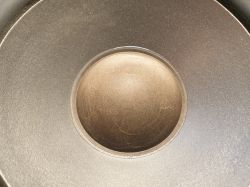Please help me with my tower speaker. Namely, the convexity of my diaphragm is pressed inside. For this reason, the loudspeaker does not play any sounds well. Please help, thank you in advance

Czy wolisz polską wersję strony elektroda?
Nie, dziękuję Przekieruj mnie tamDuzy32 wrote:Please help with my speaker from the tower speakers. Namely the convexity of my diaphragm is pushed inwards. Because of this, the speaker does not play any sound well. Please help in advance thank you
 ). When I heard a 'popping', I exposed the hole and removed the end of the handle from the speaker - the dome looks perfect, apart from the lighter 'veins' at the bends - it was badly dented.
). When I heard a 'popping', I exposed the hole and removed the end of the handle from the speaker - the dome looks perfect, apart from the lighter 'veins' at the bends - it was badly dented.
